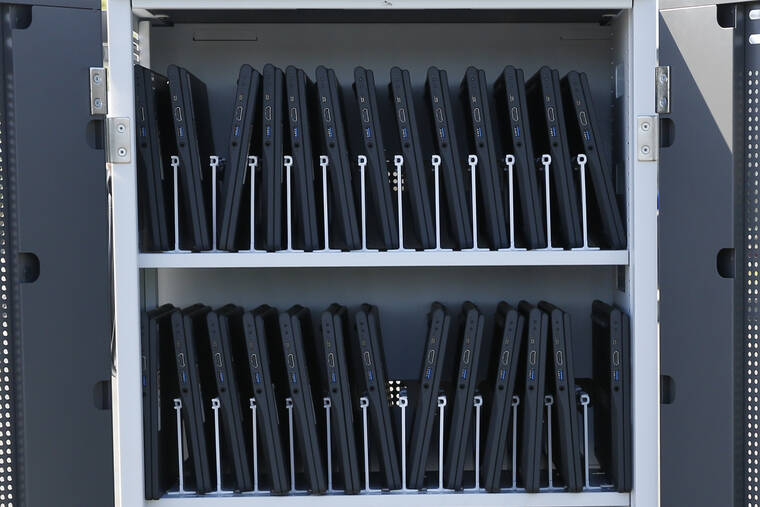Our 21st century broadband and digital equity problems are more pronounced today than ever before. However, Hawaii has the unprecedented opportunity to address these challenges thanks to our people, talent and a once-in-a-lifetime infusion of funding. This is our chance to come together collectively and make a difference.
I believe that even before the pandemic there was a digital divide. That divide grew for people without equal access to the internet, allowing people to remote work, apply for benefits, visit the doctor with a telehealth appointment, continue education, or simply stay connected to ohana and friends.
In order to achieve digital equity across the state, there is a tremendous amount of work that needs to be done — and some of it is already underway. There are local digital literacy and telehealth champions who have teamed up with the Hawaii state public libraries, Northstar Digital Literacy, Hawaii Literacy and the University of Hawaii Community Colleges to create Digital Ready Hawaii.
To help with affordability, Congress appropriated $3.2 billion for the Emergency Broadband Benefit (EBB) and tasked the Federal Communications Commission (FCC) with distributing the benefit to qualified households. The EBB ran from May 2021 to December 2021 and has since transitioned to the Affordable Connectivity Program (ACP). The ACP is a $14.2 billion program and its purpose is to extend affordability for several more years until a permanent program to support broadband affordability — much like the Lifeline program, which was created to support telephone service — is in place.
Examples of broadband equity include projects like Wifi on Wheels and Wifi on Walls. The local nonprofit organization Hawaii- KidsCAN, with initial support from partners including Kamehameha Schools, Partners in Development Foundation, Teach for America Hawaii, Kamaile Academy, AT&T, and Hawaii County Economic Opportunity Council piloted this program to equip vans with wifi access points tethered to cellular service. This allows students to get access to distance learning at least when the van is town. Wifi on Walls is a more permanent solution much like wifi access at neighborhood community centers, churches and housing complexes.
On the surface, broadband equity and digital equity might look simply like building broadband infrastructure and access options, delivering digital literacy programs, making devices available and creating affordability programs. All these efforts are very doable and important. But to start, what needs to change is our mindset to believe that digital access is a basic human right. How can we do this?
When planning low- or moderate-income housing projects, Internet infrastructure should be a priority — not an afterthought.
When delivering water or electricity to a community, internet access should be on the list as a basic necessity.
Consider broadband as an integral part of sustainable agriculture, climate action plans, renewable, clean energy projects and the circular economy.
Internet access shouldn’t be just for those who can afford it but should be a basic right for all — including our marginalized, underserved and rural communities.
Programs and organizations that serve our low-income and houseless populations should include digital access and literacy in their delivery like they do food and basic needs.
Lastly, when we talk about digital equity, we are talking about more than the internet and computers, we are talking about the ability to enable active civic engagement, we are talking about strengthening our democracy. These digital equity programs will progress only at the speed of trust and only people can develop that human-to-human connection. Through collaboration and collective action, let’s take Hawaii to new heights and use broadband and digital equity as a way to spread aloha.
Burt Lum is the broadband strategy officer for the Hawaii Broadband & Digital Equity Office.

